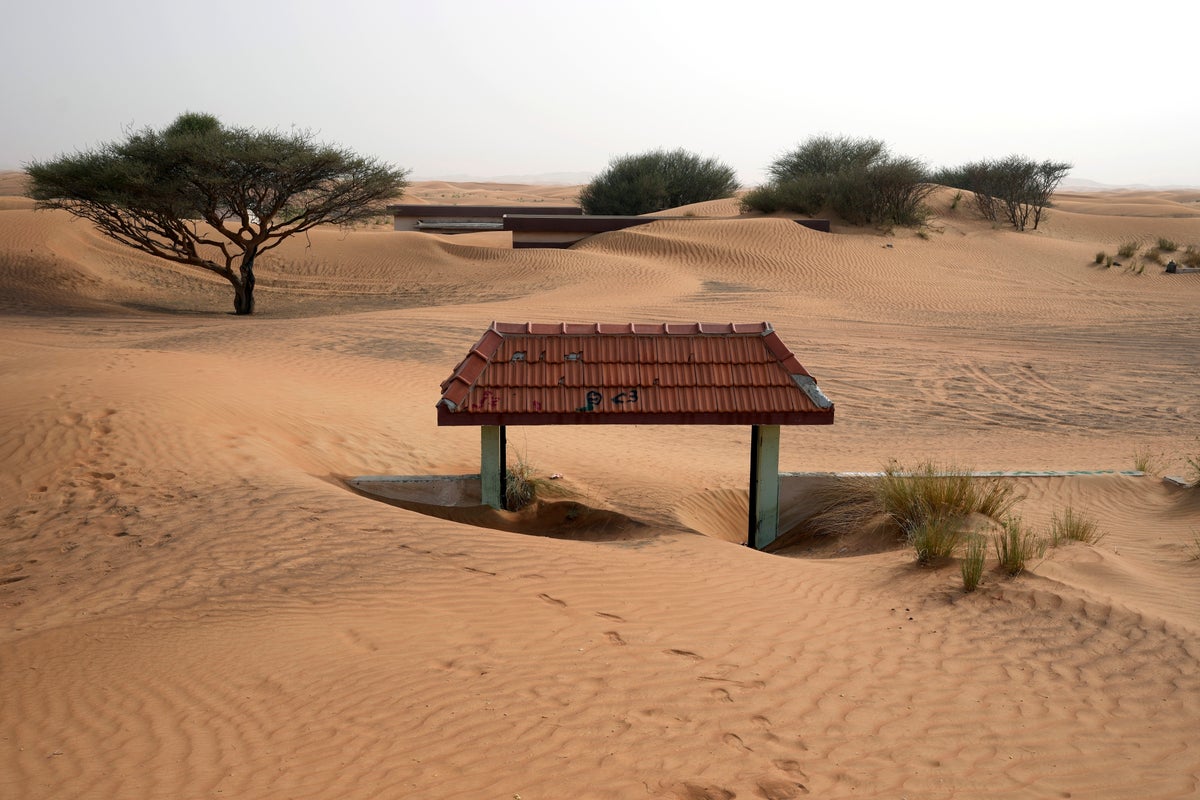
Nestled in sand dunes an hour’s drive from the skyscrapers of Dubai, a desert village abandoned in the 1990s stands as an eerie relic of the rapid urbanization of the United Arab Emirates.
Built in the 1970s to house semi-nomadic Bedouin, the village of al-Ghuraifa was abandoned two decades later as oil wealth transformed the country into a global hub of commerce and tourism, home to the futuristic cities of Dubai and Abu Dhabi.
In recent years, the ghost village near the town of al-Madam in the Sharjah emirate has become something of a tourist attraction, offering an escape from the concrete jungles of the coastal cities and a glimpse at the Emirates’ hardscrabble past.
The village, which comprises two rows of homes and a mosque, “can teach us a lot of the modern history of the UAE,” said Ahmad Sukkar, an assistant professor at the University of Sharjah who is part of a team researching the site.
It was built as part of a public housing project after the 1971 formation of the United Arab Emirates, a federation of seven sheikhdoms. The discovery of oil 13 years earlier was just starting to reshape the country.
The village housed around 100 members of the al-Ketbi tribe, Sukkar said. They were one of several Bedouin tribes that until then had led a semi-nomadic existence, raising animals, traveling among the desert oases and visiting Dubai and Abu Dhabi when they were small port towns reliant on fishing and pearl diving.
The modern cement houses, built to ease the transition to settled life, featured local flourishes. The interior walls were brightly colored, and some were adorned with mosaics. The homes also featured spaces where village elders could host local councils, known as “majalis” in Arabic. One house had wallpaper depicting a lush green landscape, a stark contrast to the monotonous sandscape outside.
It's unclear what exactly sparked the exodus just two decades after the homes were built.
In local lore, the residents were driven away by evil spirits, but Sukkar says it's more likely that they left to seek a better life in the UAE's fast-growing cities. The village had limited access to electricity and water, and was buffeted by sandstorms. Families would have also had to contend with a long commute across the desert to reach government jobs and schools in Dubai.
Nowadays the desert is slowly reclaiming the village. Drifts of sand have blown into the homes, and in some rooms, they obscure walls and nearly reach the ceiling. Only the mosque remains as it was, thanks to regular sweeping by maintenance workers from nearby Al-Madam.
Some descendants of the camel-mounted Bedouin who once plied the desert sands still reside in the Emirates' rural stretches, though many now live in cities with glimmering skyscrapers, cavernous, air-conditioned malls and a sprawling network of modern highways. Expatriates from all corners of the earth make up the vast majority of the UAE’s population, and some have taken an interest in its humbler past.
On a recent day, tour guides could be seen leading groups of visitors through the abandoned village. It’s also been the setting for music videos and social media posts featuring the foreign models, fancy cars and displays of opulence for which Dubai is now best known.
“I wonder why they left,” said Nitin Panchal, an Indian expatriate visiting the site. “Could it be a genie, could be black magic? We’ll never know.”
The municipality recently installed fencing around the perimeter, along with a security gate, garbage bins and a parking lot. Past visitors had left graffiti, scraped décor from the walls and climbed atop fragile roofs for photos.
The new measures have drained some of the mystery from the site and raised the prospect of it becoming yet another tourist attraction in a country filled with them.
Danny Booth, an expatriate from the Isle of Man, a British Crown Dependency in the Irish Sea, said he had decided to “come and have a look before things start to change here.”
“Sometimes these places are better left undisturbed, as they lose their charm when they become crowded,” he said.







